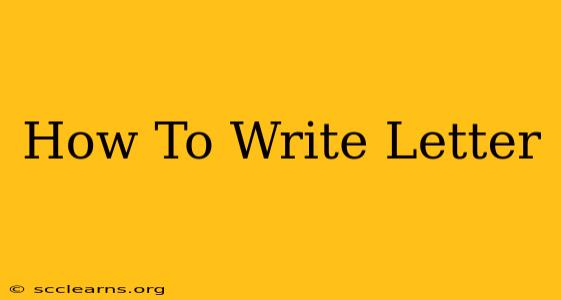Writing a letter might seem old-fashioned in our digital age, but the art of crafting a well-written letter remains relevant and valuable. Whether you're writing a formal business letter, a heartfelt personal note, or a friendly email, mastering the fundamentals of letter writing can significantly impact your communication. This comprehensive guide will walk you through the essential steps and considerations to help you write effective and impactful letters.
Understanding Your Purpose and Audience
Before you even begin writing, consider the purpose of your letter. Are you requesting information, expressing gratitude, making a complaint, or conveying condolences? Understanding your purpose will dictate the tone and style of your letter.
Equally crucial is understanding your audience. Who are you writing to? A letter to a close friend will differ vastly from a letter to a potential employer or a government official. Consider their age, background, and relationship to you. This understanding will help you tailor your language, tone, and level of formality accordingly.
Essential Elements of a Letter
While the specific elements can vary depending on the type of letter, several key components consistently appear:
1. The Heading:
- Your Address: (Your street address, city, state, zip code) – Usually placed in the upper left-hand corner.
- Date: (Month Day, Year) – Below your address.
2. The Inside Address:
- Recipient's Name and Title: (e.g., Mr. John Smith, CEO)
- Company Name (if applicable):
- Street Address:
- City, State, Zip Code: This information should be aligned to the left and placed below the date.
3. Salutation:
- This is your greeting. Common salutations include: "Dear Mr./Ms./Mx. [Last Name]," "Dear [First Name]," or "To Whom It May Concern" for formal letters. Choose the salutation that best suits your relationship with the recipient and the context of the letter.
4. The Body:
- This is the main part of your letter where you convey your message. Organize your thoughts logically into paragraphs, ensuring clarity and conciseness. Use strong verbs and active voice to keep your writing engaging and direct. For formal letters, maintain a professional tone and avoid slang or informal language.
5. Closing:
- This is your sign-off. Common closings include: "Sincerely," "Respectfully," "Regards," or "Best regards." Choose a closing that aligns with the tone of your letter.
6. Signature:
- Sign your name neatly in ink below the closing.
- Type your name below your signature for readability.
Different Types of Letters & Their Styles
The structure and style will vary depending on the type of letter:
Business Letters:
- Maintain a formal tone throughout.
- Be concise and to the point.
- Clearly state your purpose in the first paragraph.
- Proofread carefully for errors in grammar and spelling.
Personal Letters:
- Allow for a more informal and conversational tone.
- Share personal anecdotes and details.
- Focus on building a connection with the recipient.
Formal Letters:
- Use a formal tone and language.
- Avoid slang and contractions.
- Pay close attention to grammar and punctuation.
Informal Letters:
- Adopt a conversational tone.
- Use contractions and slang as appropriate.
- Focus on expressing your thoughts and feelings naturally.
Tips for Effective Letter Writing
- Plan before you write: Outline your main points to ensure a logical flow.
- Keep it concise: Avoid unnecessary wordiness.
- Use clear and simple language: Avoid jargon or overly complex vocabulary.
- Proofread carefully: Check for grammar, spelling, and punctuation errors before sending.
- Maintain a consistent tone: Your tone should be appropriate for your audience and purpose.
By following these guidelines, you can confidently craft letters that are clear, concise, and effectively communicate your message, whether it's a formal business correspondence or a heartfelt personal note. Remember, practice makes perfect! The more you write, the more comfortable and skilled you will become.

